It all started with the luxury wish to be able to use the Nespresso machine at anchor and in ports without shore power, i.e. to be able to draw strong currents from the consumer battery for short periods without damaging the battery and without the voltage in the on-board power supply dropping too far.
The espresso machine requires approx. 1,200 watts for heating up and during coffee preparation. Since the machine is operated with 230 V AC, a corresponding inverter must be used, which easily draws 100 amps during the operation of the coffee machine for the duration of 1 – 2 min. The Ective Sinus Inverter (in the next but one picture on the right) has an output of 1,500 watts and ideally requires a conventional battery with a capacity of 250 Ah.
The existing AGM battery, which is now 10 years old, has a capacity of only 170 Ah, which is definitely not enough, at most when fully charged and only for a very short time. A new AGM battery in the required range of 250 Ah costs around 700 €, weighs about 80 kg and would also be at least 4 cm too wide to fit in the intended and proven location.
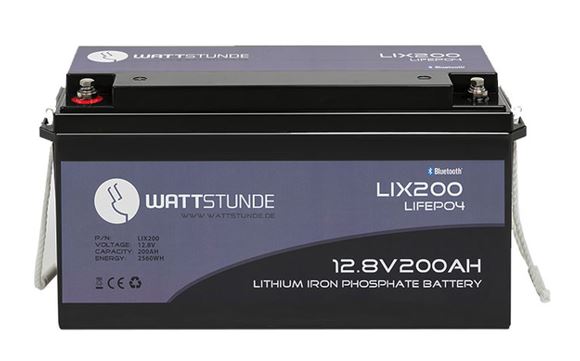
It may only be a luxury wish, but it is reason enough to take a look at the possibilities and advantages of a lithium battery, or more precisely a lithium iron phosphate battery. The manufacturer states the following properties for the LiFePo battery “Wattstunde LIX200” with 200 Ah:
- High energy density with low weight
- LIX00 – 200Ah lithium equivalent to conventional 320 Ah battery
- Up to 80% usable capacity without deep discharge
- Maximum discharge current: 150 A continuous
- Double effectiveness with over 60% weight saving compared to AGM
- Built-in BMS with protection function for regulated energy flows
- Integrated Bluetooth interface for remote monitoring with free app
- Number of cycles > 3000
- Sealed maintenance-free battery
Advantages
Despite its higher performance, the LIX200 is smaller and much lighter than the old AGM battery. That was really a delightful experience during installation in the winter storage: 46 kg out and 26 kg in. By the way, a 250 Ah AGM battery would have weighed almost 80 kg.
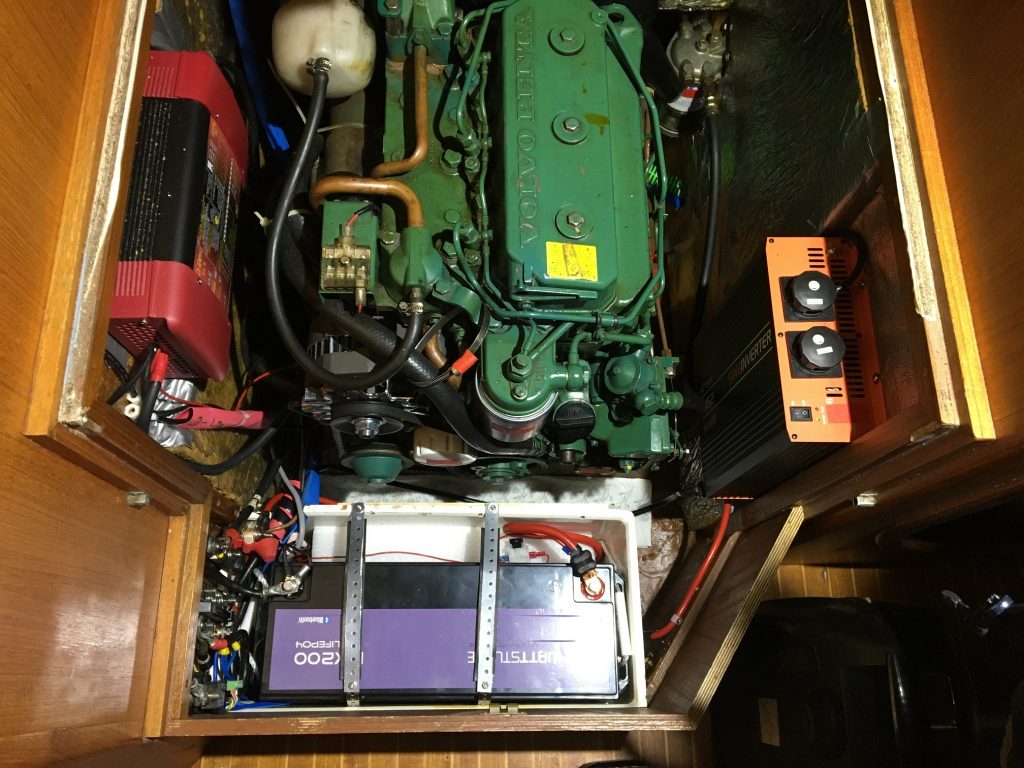
Short charging times, provided the chargers have the appropriate charging mimic and power. The battery can tolerate charging currents of up to 50% of its capacity. The built-in combination of generator with 60 amps and Sterling “charge booster” (pictured left) is designed to ensure that a considerable portion of the required charging power is provided simply by the unavoidable engine running times due to mooring and unmooring or anchor maneuvers.
A real treat is the Bluetooth interface, which allows checking the battery status at any time via an app. However, it is also an absolutely necessary source of information to keep the risk of an automatic shutdown by the battery management system under control (see below).
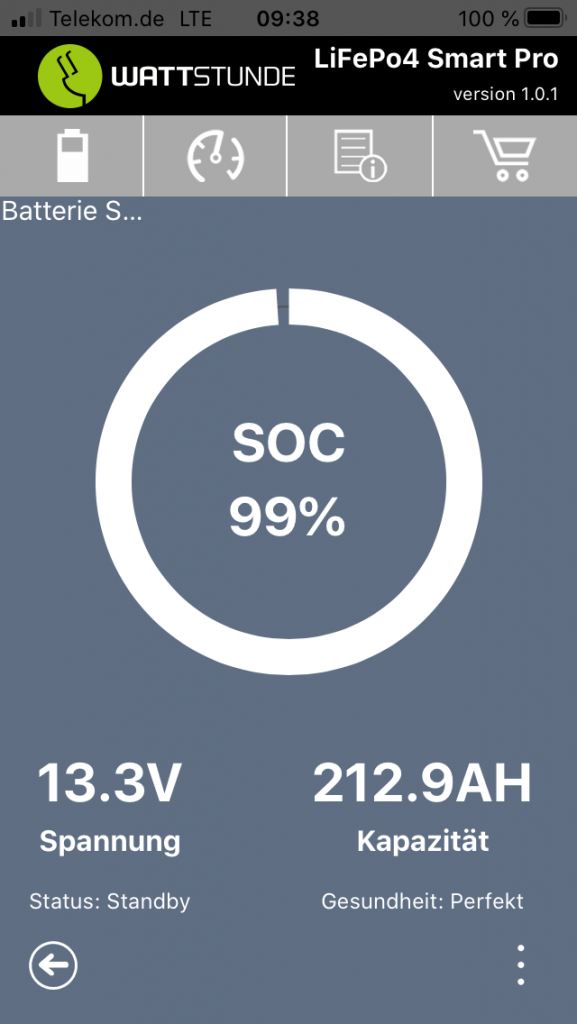
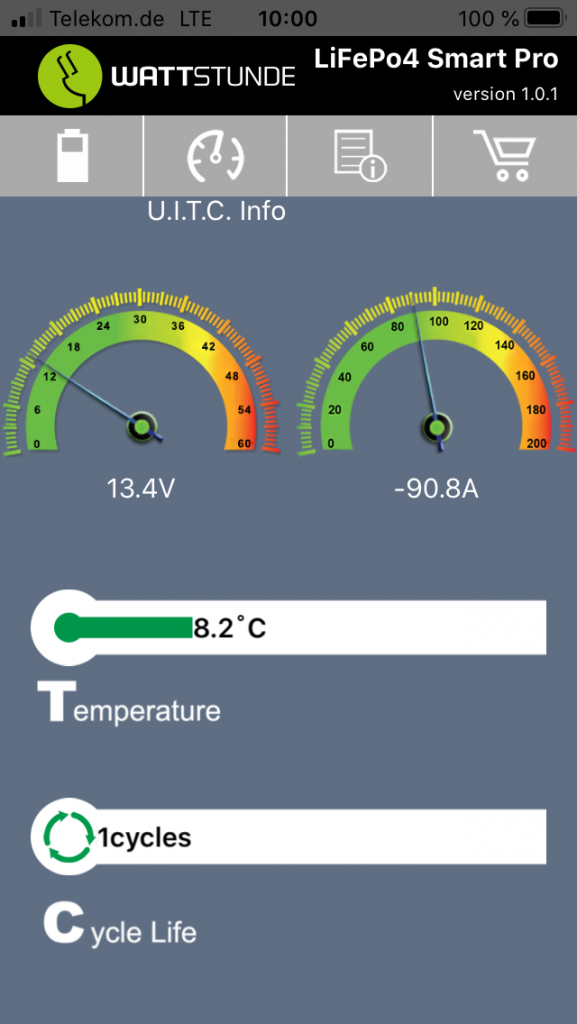
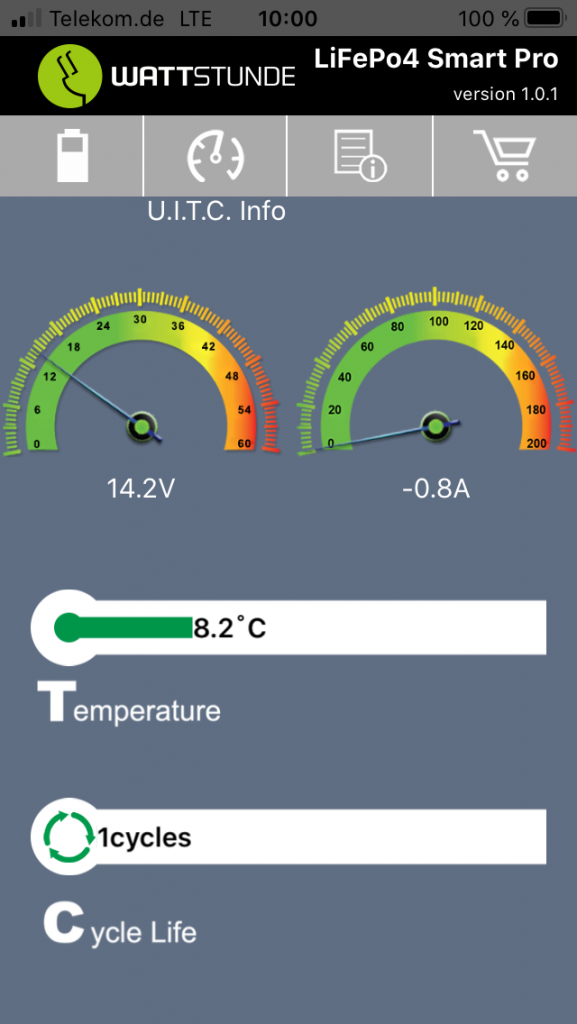
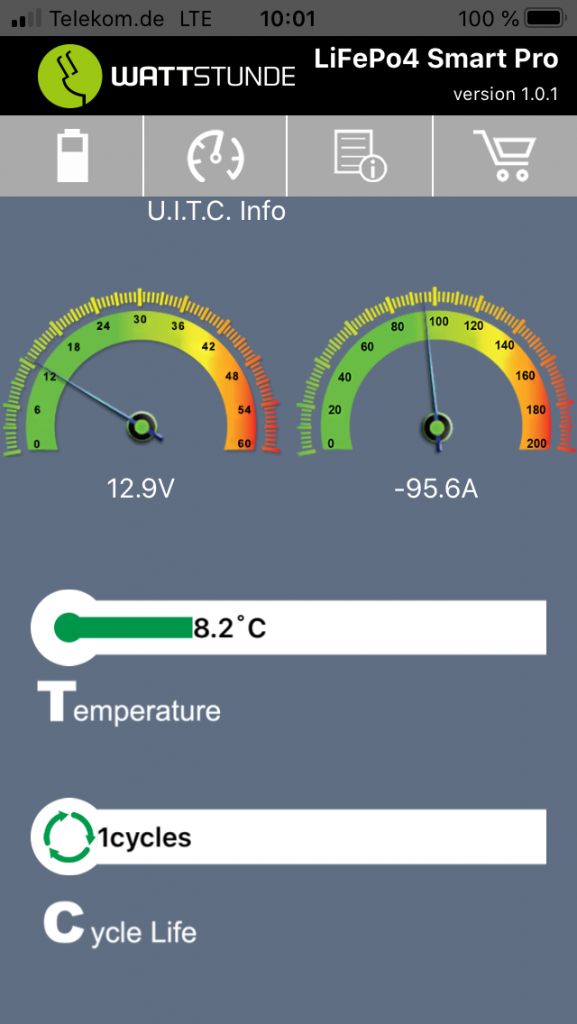
Disadvantages
The price for the LIX200 is favorable compared to the competition, but this does not change the still considerable investment for LiFePo compared to other battery types. Whether this higher investment – in addition to the other advantages – is actually compensated by the considerably longer service life may be expected. Time will provide the proof. We will see.
In his very informative comparison of the different types of on-board batteries (https://klabauterkiste.de/batterietypen/), Jan points out the risk of automatic shutdown by the battery management system (BMS). This risk is certainly present, but can be kept under control by appropriate measures. According to the manufacturer, the shutdown can only be triggered by the following circumstances and corresponding => measures:
- overheating (approx. 65°C) => temperature responsive charging technology
- too high charge voltage (> 15 V or voltage of a cell over 3.75 V) => disconnect generator, if controller defective, have alternative to generator available
- Charging current too high (180 A over 8 s) => see above.
- Discharge current too high (400 A over 3.5 s) or short circuit => disconnect the cause from the mains.
- Deep discharge of the battery (< 10 V or voltage of a cell below 2.50 V) => avoid or rectify immediately, as the BMS – which continues to run despite being switched off – can permanently damage or destroy the battery through its own consumption.
Once disconnection has occurred, it can be reversed – e.g. after disconnecting the LiMa with a defective regulator – by briefly disconnecting the battery from the vehicle electrical system and then reconnecting it. The battery then switches on again automatically.
But of course, this risk is present and you have to be prepared for it and have the confidence to deal with it. Standing there in a critical situation without on-board power and not knowing what to do next is more than unfavorable.
Conclusion
The arguments have convinced me. I installed the battery last winter and can now report on my first experiences. On a two-week trip from Kröslin to Smögen and back (> 600 nm) in the first weeks of June, the experiences were extremely positive.
The frequent withdrawal of high currents for a short time was not a problem at all and was completely “put away motionless” with regard to both the battery voltage and the remaining capacity.
In total, there were about 12 hours of engine running time on the trip, during which the battery was charged via the Sterling “charge booster” – depending on the state of charge – with up to 60 amps. After a day of sailing, the charge level was usually around 80% in the evening before starting the engine to dock. The lowest charge level was once 75% after 20 h of sailing, i.e. 50 Ah had to be recharged. At medium speed, this is done in a good hour, not least because the LiFePo battery can simply be charged to the end with the maximum charge current. If the engine only runs for half an hour until the ship is moored – also no problem, then it is just recharged the next morning when casting off. I was on the whole trip only three times on shore power and not for charging, but to have hot water for rinsing.
However, this perceived independence from shore power can only be realized with an appropriate overall concept. The average running consumption (PC, radar, autopilot, refrigerator) during sailing is about 7 – 8 amps. The connected fuel cell continuously supplies about 5 amps, so that on balance a discharge of about 3 amps per hour takes place on average. The resulting discharge at the end of the day is then compensated by the alternator, boosted by the “charge booster”.
Overall, I find these results very pleasing. It’s a good feeling to be largely independent of shore power. For example, simply being able to anchor in a relaxed manner without worrying about the state of charge. Or simply arriving in the harbor without having to immediately look for the shore connection.
2 Responses to LiFePo battery “Wattstunde LIX200” with 200 Ah
Leave a Reply to SY_Trekkerlampe Cancel reply
This site uses Akismet to reduce spam. Learn how your comment data is processed.
-
Recent Posts
Recent Comments
- Calypsoskipper on Expose Finngulf 39
- Christian on Expose Finngulf 39
- Calypsoskipper on Expose Finngulf 39
- Kenneth Melcher on Expose Finngulf 39
- alex on Saildrive diaphragm – replace according to instructions or just keep?
Kalender
January 2026 M T W T F S S 1 2 3 4 5 6 7 8 9 10 11 12 13 14 15 16 17 18 19 20 21 22 23 24 25 26 27 28 29 30 31 Tags
12 V Verkabelung 12 V wiring Anchor windlass Ankerwinde Biscaya Bora Segel Bretagne Brittany Camaret sur mer circuit distribution Cornwall Cowes Cuxhaven Den Helder Diaphragm English Channel Falkenberg falkenbergs Båtsällskap Falmouth Gezeitensegeln havarie Hydrogenerator Lewmar Ocean Membrane MiniPlex-3USB-N2K Nordsee Norwegen Oxley Parasailor Plymouth Ramsgate Saildrive Saildrive diaphragm Saildrive Membrane SailingGen Seenotrettung Segeln in Tidengewässern Sjöräddnings Sällskapet Skagen Skagerak Stromkreisverteilung tidal navigation tidal water routing Tidennavigation ÄrmelkanalArchiv
Kategorien

sehr anschaulich 😉
als Starterbatterie ist sie nicht angeschlossen?
(wenn nein – ist als Start noch blei oder auch schon lithium eingebaut?
Nein, separate Starter Batterie (AGM)